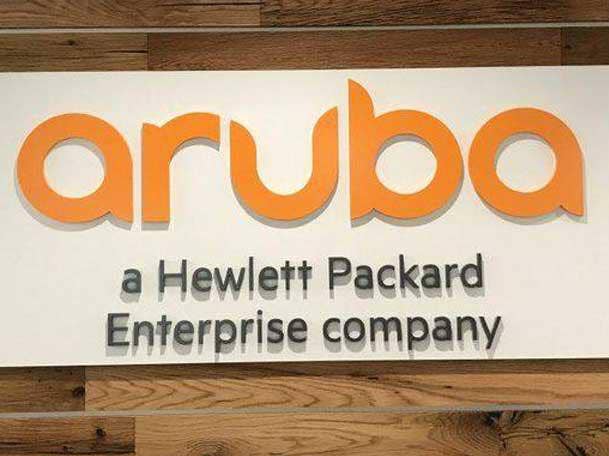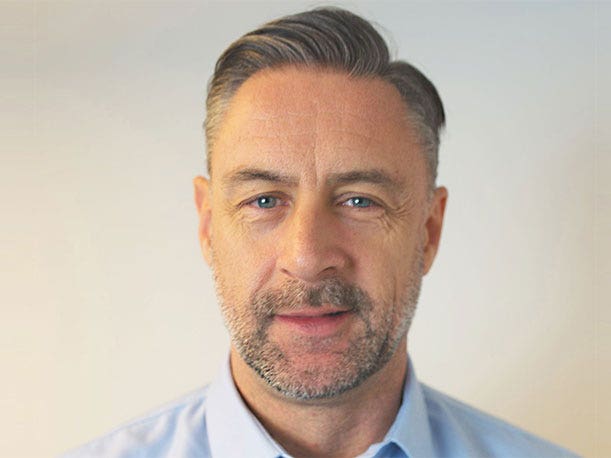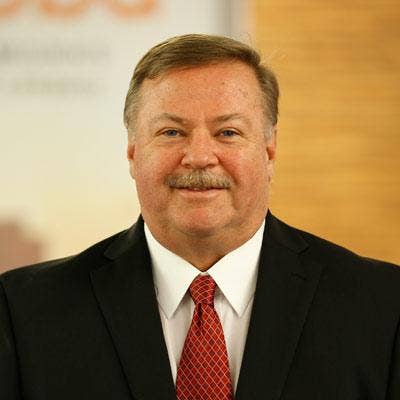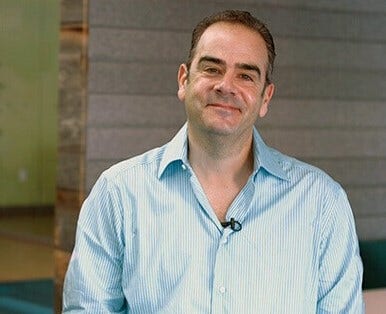Aruba Networks Execs On NaaS Adoption And The As-A-Service Opportunity For Partners
Aruba’s EVP and GM Phil Mottram tells CRN about the NaaS opportunity for partners and how the company is leaning on the channel in its as-a-service go-to-market: ‘For the broader enterprise market, this is where the channel is really important to us.’

Network as a Service (NaaS) was the name of the game at Aruba Atmosphere 2023. Attendees at the annual conference saw the rollout of Agile NaaS, a strategic approach to market for Aruba and its channel partners that involves working with customers to understand what their business priorities are related to deployment and operating the network.
While NaaS is still in its early innings, it’s a big priority for Aruba Networks this year, especially since it’s being backed by the popular and powerful HPE GreenLake platform. Executives such as Phil Mottram, executive vice president and general manager of Aruba, highlighted the NaaS adoption the networking specialist is seeing from several large U.S.-based enterprise customers, including CarMax and Home Depot. Meanwhile, other Aruba executives like Larry Lunetta, vice president of WLAN and security solutions marketing and Vice President of Channels Jim Harold talked about the importance in taking NaaS to market through channel partners and the opportunities partners can expect from adding NaaS to their repertoires.
Here’s what some of Aruba’s biggest executives had to say about NaaS in exclusive interviews with CRN at the show last week.

Phil Mottram, executive vice president and general manager on NaaS adoption
We’ve been doing [NaaS] now for probably two years and we’ve done about 50 large projects for customers. Those been well received, by the way. They worked out well for us and worked out well for the customer. Ken [Shaffer, CarMax’s technology vice president of infrastructure and operations in attendance during a keynote panel at Aruba Atmosphere 2023] is a big fan of what we’ve done for his organization. He certainly likes the predictability of the financial profile. I spoke to him about it, and he said that in previously speaking with his finance director, one year he said: ‘I need $100.’ The year after: ‘I need $400.’ And the year after, $60. These sorts of peaks and troughs, can be quite difficult to manage for the finance team. [Shaffer] said that he’s actually managed to get his finance team behind him and over the period of time since he’s implemented NaaS, he’s seen [about] a 40 percent increase in his budget.
So, we see that, and then what we’ve been trying to do is we think there’s a broader market opportunity for NaaS. It’s not just for big companies, it’s for other companies as well. In terms of companies that are going to be interested in it, some industries find it very easy to get access to capex. The example I use is if you’re building an oil rig -- let’s say $800 million for the sake of argument -- adding another $2 million for network infrastructure is a rounding error. You’ll probably always buy on a Capex model because it’s easy to get capex, whereas for retail customers that lease shops, it’s all about opex. So maybe [NaaS] fits better with that model. So, within the broader enterprise and midmarket, you’re going to have some verticals that are going to like NaaS, and some that will never do NaaS. It’s more than just a commercial proposition. A lot of companies, and we’ve heard this consistently, they want to get the noise out of the day-to-day network management. If you speak to a network engineer and ask: ‘What do you actually spend your time doing?’ They spend 85 percent of their time dealing with day-to-day network faults. So, if there’s anything you can do to free up more time for them to do some of the more interesting, forward-thinking stuff, they’re all really interested in it. Those are the things that are going to draw people more into the NaaS market.
For the broader enterprise market, this is where the channel is really important to us. It’s a matter of scaling across those verticals in the broader market. And I think that’s a bit of a longer journey. We spend quite a lot of time trying to educate partners on what the offers are. We got feedback about the service packs, which is one of the main reasons we’re adding [a Network Policy NaaS Service Pack that’s based on Aruba ClearPass] because that’s the feedback we got from partners. Hopefully now we’ll start to see some ramp-up in volumes.

Larry Lunetta, vice president of WLAN and security solutions marketing, on the importance of taking NaaS to market through the channel
We now believe we’re the largest provider of NaaS solutions. [We have] CarMax, we have Home Depot, we have a lot of sizable installations, but we see the growth coming from the broader market. But we can’t scale all of that service, so that’s where our partners come in. We’re just at the beginning of this. The service packs are designed to help the partners quickly plan for, acquire, and deploy NaaS solutions, whether they manage the network or not, that’s a choice that the customer and they will make. But we’re expecting now the next increment of growth coming from [partners scaling NaaS adoption though Aruba’s service packs].
We don’t sell service packs directly to a customer. It goes through the partner and it’s very explicit on our part. You can imagine how complex some of these networks are that we’re managing. We’re not any different than a lot of organizations -- it’s hard for us to find networking experts, so to tap right into that talent pool, that’s where our channel partners come in. Partners will decide how fast they want to grow into this and what their role is, and again, they don’t have to manage the network. But they can help set up the NaaS infrastructure. They can grow based on their own resources. But it’s just like anything else. If we have 500 channel partners, the chances of them acquiring a critical mass collectively of network expertise is better than ours.

Alan Ni, senior director, edge marketing, on Agile NaaS and HPE GreenLake for Aruba
Agile NaaS is our go to market narrative, whereas NaaS in HPE GreenLake for Aruba is the actual product. A lot of it -- the compensation, the enablement and structure are all built around the new HPE Vantage program. Under the Vantage program, that’s where we go and empower partners to build more competency through the Centers of Expertise, the services tracks, and there are specific prerequisites around the services tracks and getting, basically the certification to then enable themselves into specific programs. And then from a program perspective, with respect to HPE Aruba, both the service packs and the other NasS pieces, depending on the jurisdiction, there is additional compensation that a tier two partner can actually obtain and that ranges anywhere between 5 and 11 percent depending on where they are and whether they attained the prerequisites and the specifics or product that they’re actually tied into.
I think the other thing to think about with NaaS versus kind of the traditional model is that things like service packs, we believe, allow the partners to really bundle and pair up higher value pieces of their portfolio that gives them higher margins. We really think that this is a core vehicle to allow [partners] to bundle it in versus just kind of selling purely a la carte.

Jim Harold, vice president of channels, on the partner opportunity around NaaS
We spend a lot of time with our partners around NaaS, which is obviously a key initiative for us and for a lot of them. It’s kind of funny -- you talk about as a service, managed service, depending on who you’re talking to, you could be talking about two or three different things. So, the fact that we came out with Agile NasS as far as the different things could mean to a customer, I think it became very helpful for partners to understand that it is more than one thing and it’s about choice. The HPE GreenLake for Aruba NaaS service pack, I describe it as designed for 100 percent partner services. We came out with eight [service packs]. When you buy a service pack, you get everything you need. If it’s indoor wireless, you get the [access point] AP, the mounting bracket, you get a [Aruba Central] license and everything you need to do the install. You go into a quote tool, out comes the price. So, the big attraction [for] partners is an immediate path to ARR and not capital outlay. Then, the really exciting piece is the services they can wrap around it. [Things like] customer success, day one installation, day two operations. [NaaS] was really designed for partners to take the core, [stock-keeping unit] SKU or product, and then come up with a service offering that they can wrap around it that they can brand for themselves. Plus, the really nice thing about is you can get the power of the GreenLake brand, which is pretty big in the marketplace.
This is well received, and we just really started deploying -- probably in the last quarter or so. So, we’re really ramping up now. We share with partners; if you look at this, there’s a 75 percent upsell opportunity from a services standpoint on top of the core. Some of the bigger partners that already have managed service offering, they may have it with some other products, some of our competitors and they’re looking to build it out for Aruba. Most of them are like: ‘I want to insert this service pack into that.’ And that’s what where it makes a lot of sense. Some of the smaller partners already do services. So, for them, it’s coming up with: ‘How do I productize this?’ So, whether I go out and say: ‘Okay, here’s a basic-level service’ and then: ‘here’s a gold-level service’ and maybe have two prices or two offerings with it. But really the appeal is that it’s very rich from a partner services standpoint. So, they’re pretty excited about it.

Jeff Lipton, vice president of strategy and corporate development, on the connection between SASE and NaaS for partners
[Secure access service edge] SASE is well suited to be as a service. If you look at all of our NaaS opportunities, the partners really like it because they can do planning and deployment; they can add a lot of their value around what we do so we’re partners in a true sense of the word and we’re both making money from the opportunity and the customer is seeing a good benefit.
I think SASE fits into [as a service]. We have different flavors of NaaS; we have sort of a SKU- base NaaS, and they are standardized building blocks of NaaS and the partners can then sell them and add a lot of their services around it. So, SASE could be part of this. It could be one of the building blocks of that SKU base-type NaaS. It absolutely fit in really well there.